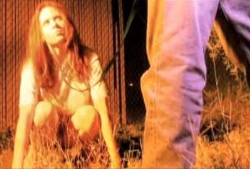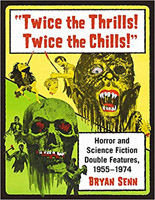
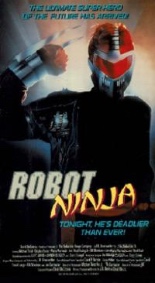 A stealth killing machine trained in the ancient art of invisible assassination known as ninjutsu — who also happens to walk with the clankity-clank of a clunky robot, mind you — is becoming the biggest hit on Burt Ward’s television station.
A stealth killing machine trained in the ancient art of invisible assassination known as ninjutsu — who also happens to walk with the clankity-clank of a clunky robot, mind you — is becoming the biggest hit on Burt Ward’s television station.
Pushing aside the fact that Burt Ward has a successful television station, the campy humor of the Robot Ninja program doesn’t sit well with the creator, Leonard Miller (Michael Todd, Lurking Fear). Instead of filing an injunction or, even easier, moving on and creating an anti-Robot Ninja answer in comic-book form, Miller hooks up with his German friend and creates a real-life Robot Ninja suit.
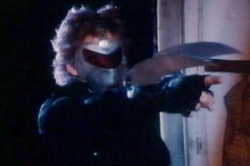 When he runs afoul of the city’s top criminals — apparently a couple of rednecks in your uncle’s windowless van — Miller pops a handful of pain pills and slams some pieces of metal in his forearm and takes the Robot Ninja-ing to the streets, wreaking low-budget havoc in many open fields and parking lots, with plenty of old-school gore effects that made Tempe Entertainment releases Friday night must-rents.
When he runs afoul of the city’s top criminals — apparently a couple of rednecks in your uncle’s windowless van — Miller pops a handful of pain pills and slams some pieces of metal in his forearm and takes the Robot Ninja-ing to the streets, wreaking low-budget havoc in many open fields and parking lots, with plenty of old-school gore effects that made Tempe Entertainment releases Friday night must-rents.
Directed with empty-pocketed flair by legendary backyard filmmaker J.R. Bookwalter (The Dead Next Door), this last-ditch effort to get the video label’s efforts out to this new generation of film geeks is a grand one, complete with an autographed Blu-ray sleeve and a moderately entertaining comic-book tie-in. But for me, Robot Ninja mostly karate-chops my own sense of teenage nostalgia, so much so that I’d like to preorder Bookwalter’s Ozone and The Sandman, if possible. —Louis Fowler

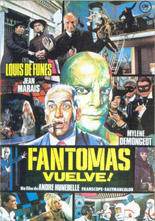


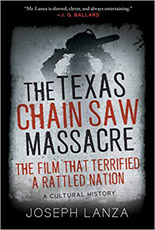
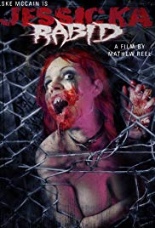
 Picked up and released by Troma, which just about says it all,
Picked up and released by Troma, which just about says it all, 